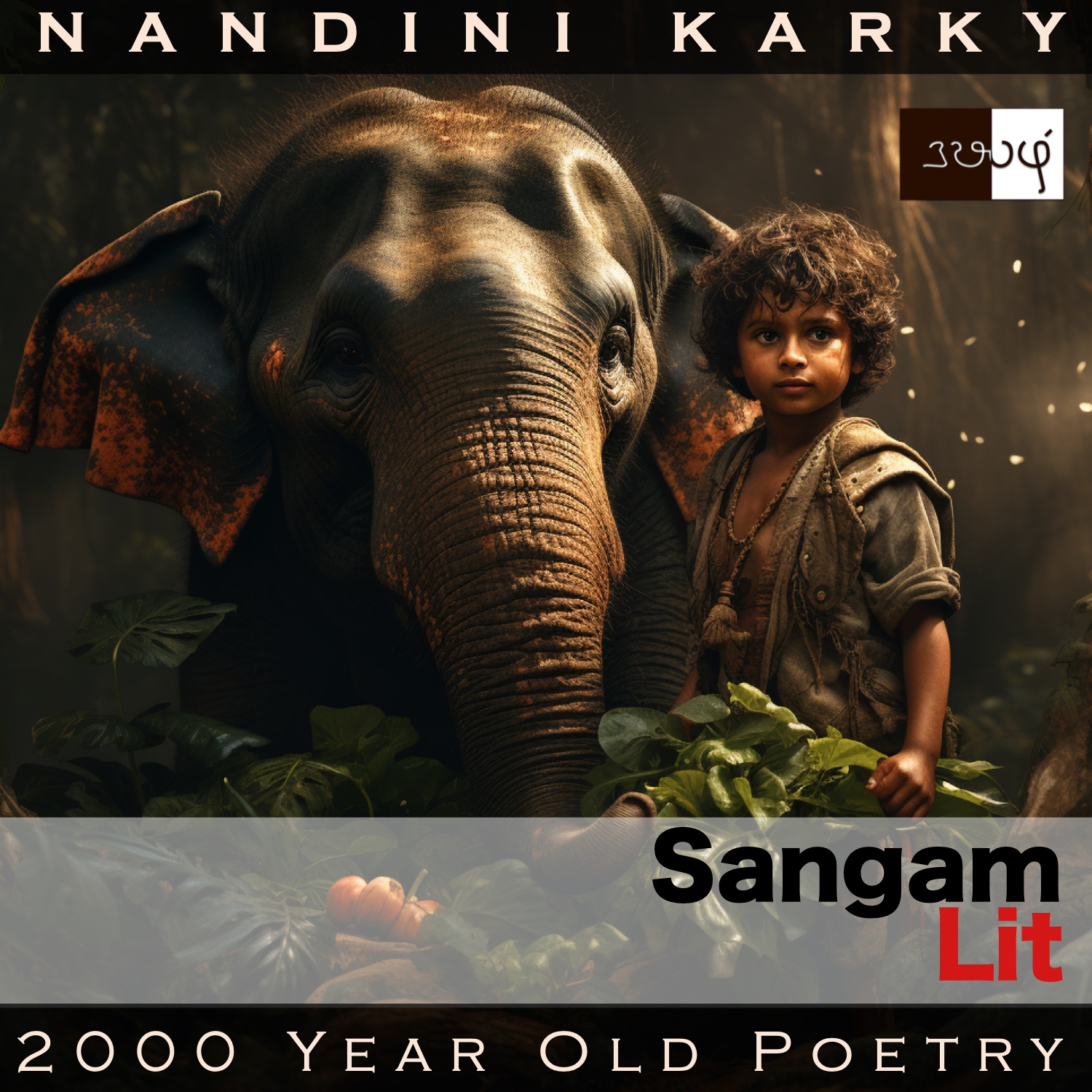Podcast: Play in new window | Download
Subscribe: Apple Podcasts | Spotify | Amazon Music | Android | iHeartRadio | TuneIn | RSS | More
In this episode, we learn of the way to a town ruled by a famous patron, as portrayed in Sangam Literary work, Puranaanooru 181, penned about the Velir King Vallaar Kizhaan Pannan by the poet Sonaattu Mukaiyaloor Sirukarunthumbiyaar. Set in the category of ‘Vaagai’ or ‘Victory’, the verse reveals the battle fame of this king in a subtle manner.

மன்ற விளவின் மனை வீழ் வெள்ளில்,
கருங் கண் எயிற்றி காதல் மகனொடு,
கான இரும் பிடிக் கன்று தலைக் கொள்ளும்
பெருங் குறும்பு உடுத்த வன் புல இருக்கை,
புலாஅ அம்பின், போர் அருங் கடி மிளை,
வலாஅரோனே, வாய் வாள் பண்ணன்;
உண்ணா வறுங் கடும்பு உய்தல் வேண்டின்,
இன்னே சென்மதி, நீயே சென்று, அவன்
பகைப் புலம் படராஅளவை, நின்
பசிப் பகைப் பரிசில் காட்டினை கொளற்கே.
The last few verses and this one as well appear to be stand-alone songs celebrating a leader of a particular town. In this case, the town’s name is ‘Vallaar’ and the poet’s words can be translated as follows:
“When the fruit of the wood-apple tree in the yard falls in front of the house, the loving son of the dark-eyed hunter woman and the calf of the female jungle elephant try to take the fruit at the same time, in the severe place surrounded by a huge fort, with arrows reeking of flesh, and an impenetrable forest in ‘Vallaar’, the town of Pannan with an ever-victorious sword. If your starving poor kith and kin are to live, you should go this day, before he departs to conquer enemy lands, and reveal your state so as to claim your gift, which is sure to be the enemy of hunger!”
Let’s delve into the details here. The poet starts with a close-up shot of a wood-apple tree in the front of a house, at the moment the fruit is ripe and decides to let gravity take control. When this fruit falls down, at the same time, a little boy and a young elephant calf rush there to pick it up. This boy is said to be the son of a hunter woman. The poet reveals that this adorable meeting is taking place in a formidable spot, surrounded by a huge fort, protected by flesh-smelling arrows, the significance of which is that it stands as a threat to anyone with hostile intentions. From the fort and the guarding soldiers with their flesh-reeking weapons, the poet moves to a thick forest beyond. He says this is the town of Pannan, known by the name ‘Vallaar’.
Shifting from the king’s town to the person before me, an impoverished bard, the poet says to him that if at all he wants to end the starvation of his kith and kin, the only thing to do was to drop everything and rush to the king’s place, before the ruler set off on another of his conquests. The poet concludes with the prediction that if this bard were to reveal his hunger to the king, then for sure, the king would shower gifts that would sound the death knell to the bard’s hunger!
In that curious scene where an elephant and a boy rush together for the wood apple, the poet places it so as to show that hunters and soldiers, lived very close to the forest, and thus the king had a rich supply of war elephants. Also, in the insistence that the bard leave the very day, there’s clear indication that this ruler was a warring king, who often set out to conquer enemy lands. Beyond all these inferences of war, at the core, the verse is like the ancient and verbal version of a ‘Google map’ of today. The poet too is revealing the features of the land and structures the bard will encounter before meeting with the slayer of his hunger at the destination, and with those instructions, we get a glimpse of a fort and a forest of the past!




Share your thoughts...